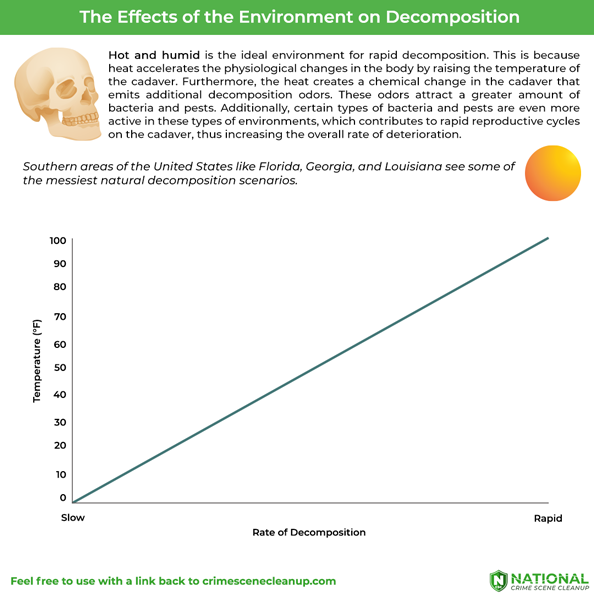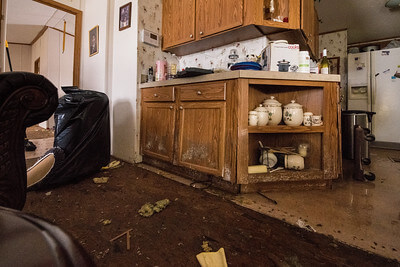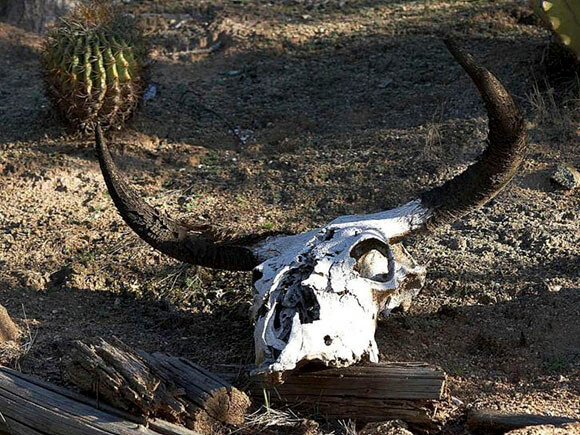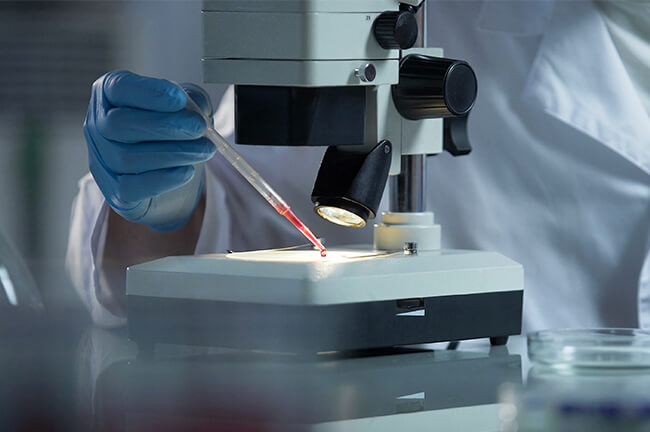How The Environment Affects Decomposition

Sadly, death and decomposition is an inevitable part of life, although it’s a topic most of us don’t want to think about. Still, many of us are fascinated by the topic of what happens to the body after you die. After all, no one has been able to explain what happens afterwards. We are only able to explain what we need to know from hundreds of years of studies. Thanks to body farms from all over the world, we’ve been able to provide solid answers to the following questions:
- Does the environment or climate affect the way a body decomposes?
- How are these situations responded to in forensics and bioremediation?
These are two of the most important questions to answer in forensic and bioremediation situations. Although the National Crime Scene Cleanup (NCSC) crews aren’t directly a part of the forensics process, we have worked in conjunction with forensic teams to remove the aftermath for over 20 years. We are happy to share what we’ve learned from over two decades of working in this field.
The Type of Environment
When bodies begin decomposing, the process can look different depending on the environment it’s in. The rate at which the body breaks down is highly dependent on things like the temperature and moisture from the area it occurred in.
Hot & Humid
Hot and humid is the most ideal environment for rapid decomposition. Heat aids the physiological changes in the body by raising the temperature of the cadaver. Furthermore, the heat creates additional decomposition odors that attract a greater amount of bacteria and pests. Certain types of bacteria and pests are more active in these types of environments, which means the rapid reproductive cycles on the cadaver contribute to the rate of its overall deterioration.
Southern areas of the United States like Florida, Georgia, and Louisiana see some of the messiest natural decomposition scenarios.
How Humidity Affects Adipocere Formation
A hot and humid environment also encourages the growth of adipocere. An adipocere is a wax-like substance formed by anaerobic bacteria on the body fat of a corpse. Adipocere forms when the temperature is between 50-104 degrees fahrenheit. While high humidity (75%+) is a probable factor, two studies by Forbes et al and Sikary et al. implies adipocere formation occurs when there’s high moisture or body fat on the cadaver. Another study by Notter & Stuart imply certain types of fabric may also contribute to adipocere formation.
The wax-like substance resembles soap. There is even an adipocere mummy at the Philadelphia Mütter Museum known as “the Soap Lady”. The soap lady is actually an extreme example–most environments don’t favor adipocere growth to the point they become naturally mummified. The ideal conditions for such are actually very rare.
Even if there is a little, it’s always a mess. The anaerobic bacteria from the corpse’s gut (or surrounding environment) spurs an enzymatic reaction to convert unsaturated liquid fats into solid wax-like saturated fat using moisture from the air or body. It’s really as gruesome and as messy as it sounds–and trust us–deodorizing and cleaning the mess left behind from the process is no simple process.
Dry
In dry environments like the desert where the temperature can range up to 130 degrees Fahrenheit, rapid decomposition occurs the same way the tropics do. The only difference is the lack of humidity causes an absence of adipocere. It is still possible, however, if the body had high moisture or body fat content during the initial stages.
Natural Mummification in Hot and Dry Conditions
A small 2017 study by Leccia et al. imply that natural mummification is also still possible if the cadaver is emaciated, indoors with little access to flies, and the environmental conditions are hot and dry. When there is a lack of body fat, fly access, and dry conditions, the process is slower, giving the appearance of a more preserved cadaver.
We can certainly attest that there is still plenty of bodily fluids left behind despite those conditions. The bowels, kidneys, or stomach is expelled when you die, which likely means vomit, feces, and/or urine. If not in the beginning, then over time as part (not all) of the body breaks down and becomes more exposed.
Other Notable Factors
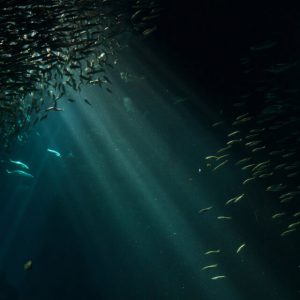
How a body decomposes in water depends on certain factors. In general, the decomposition rate is slower, as water typically holds less heat.
There are still several factors that can contribute to the process aside from hot, arid, cold, and humid climates. The other notable factors being:
- Underground: Even when the body isn’t buried with a tomb, the process does take a little longer when it’s happening underground. It’s much like the point we just mentioned with the little access to flies. It’s true that flies contribute to a large part of the process–and the mess.
- Oxygen/air: The less air available, the less active the microorganisms are. This is especially helpful to forensics when the body is found in an air sealed barrel, crawl space, or catacomb.
- Underwater/subaquatic: If you’ve ever wondered why the ocean is colder than the sand when you’re at the beach, it’s because water doesn’t need as much heat. Therefore, it disperses heat much faster. With that, the initial decomposition process is slower than it would be on land. However, it’s not for very long. The body becomes less dense and floats to the surface in the bloat stage. At the surface it becomes vulnerable to flies and offsets odors that attract other aquatic scavengers (e.g. sharks). There are also other factors to consider here, including how deep the body is in the water, how cold the water really is (tropical waters tend to average higher temperatures), the tide, and how active the scavengers are (can be affected by the time of day or season).
Does the season matter?
Theoretically, yes, the season would affect the process. However, recent research has given conflicting implications otherwise. A 2020 study by the Cranfield Forensic Institute found that:
- Spring had the slowest onset of decomposition right above winter.
- Summer and Fall had the biggest similarities despite the extreme differences in temperature.
- The temperature did not have a significant effect on how the progression of the cadaver looked.
- Looking over all the seasonal variables, the largest catalyst to rapid decomposition was the fluctuations in seasonal humidity.
- Over all, the different seasons did not affect the onset of decomposition.
Although the most recent 2020 study by the Cranfield Forensic Institute implied seasons had only a slight influence on the decomposition rate, it is still an important factor to consider.
Forensic teams and remediation specialists must consider all possible indicators for each case. The season tells a lot about the average weather conditions and temperature in any unique situation. It can also affect how significant the time of day the situation occurred may be.
A Note on The Time of Day
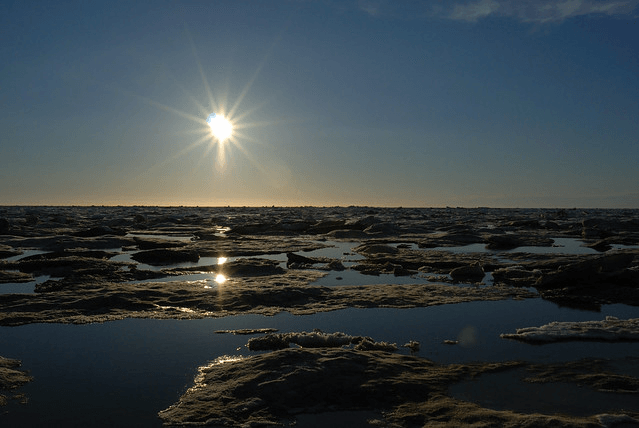
Photo of the low lying sun in Barrow, AK. (Photo by Andrei Taranchenko)
An often overlooked detail is how the estimated time of incident can affect the decomposition. As we see above, the temperature greatly affects the decomposition rate of the body. When the body passes in broad daylight, the body absorbs heat from the sun.
Heat also causes the body to emit more decomposition odors which draws more pests and animals. That means in areas like Alaska, where the climate is cold and the sunlight availability is minimal, the decomposition rate tends to be much lower.
It’s important to note that in order for this to be a factor, the body needs to be outside or in the sunlight. It’s also useful to note that forensics must consider how the time of day may contribute with the seasons and geolocation. For example, the onset of decomposition could look much different for a body that died outside at 5 PM on a Winter day vs. a Summer day at the same time in California.
How Emergency Response Units Respond
All of this information is useful to fully understand the scope of the problem and bring attention to important details surrounding the case. That is why considering these details are a critical piece for emergency response units like the National Crime Scene Cleanup to know how long the body has been decomposing.
The Forensic Team

A photo of Gabby Petito
A large part of the examination of a forensic case is looking into the conditions of which the incident occurred in. Forensics will want to know all of this information to gain a better idea of how the crime happened and where it happened. This can be important information to tracking down a killer or assailant, which is why understanding the environment is key.
In 2021, a homicide catapulted this issue into the public consciousness of the world. Updates regarding the murder of Gabby Petito flooded social media and television, capturing hearts and attention as the girl who quickly became “America’s daughter”. When remains matching her description were found in Wyoming’s Grand Teton National Park, one of the first questions the world wanted to know was if the remains could be forensically examined. A second surge of interest came when the remains of Brian Laundrie–the missing person of interest–were discovered in the Carlton Reserve in Florida. Analyzing the condition of the environment helped anthropologists understand how he died to close the case.
The Biohazard Cleaning Team
Biohazard cleaning companies like National Crime Scene Cleanup need to know the conditions which the onset of decomposition began to dispatch and properly respond. This information helps prep crews with the correct supplies, PPE needed, and generate the correct estimates. A decomposing body in the cold is still messy, but requires significantly less supplies and amount of cleaners than one discovered in a Florida home with no A/C.
If you are reading this article to inform yourself on these types of services, our helpful emergency crews are here to help you 24/7/365 with any questions you may have. Call us 1-844-255-2461.


